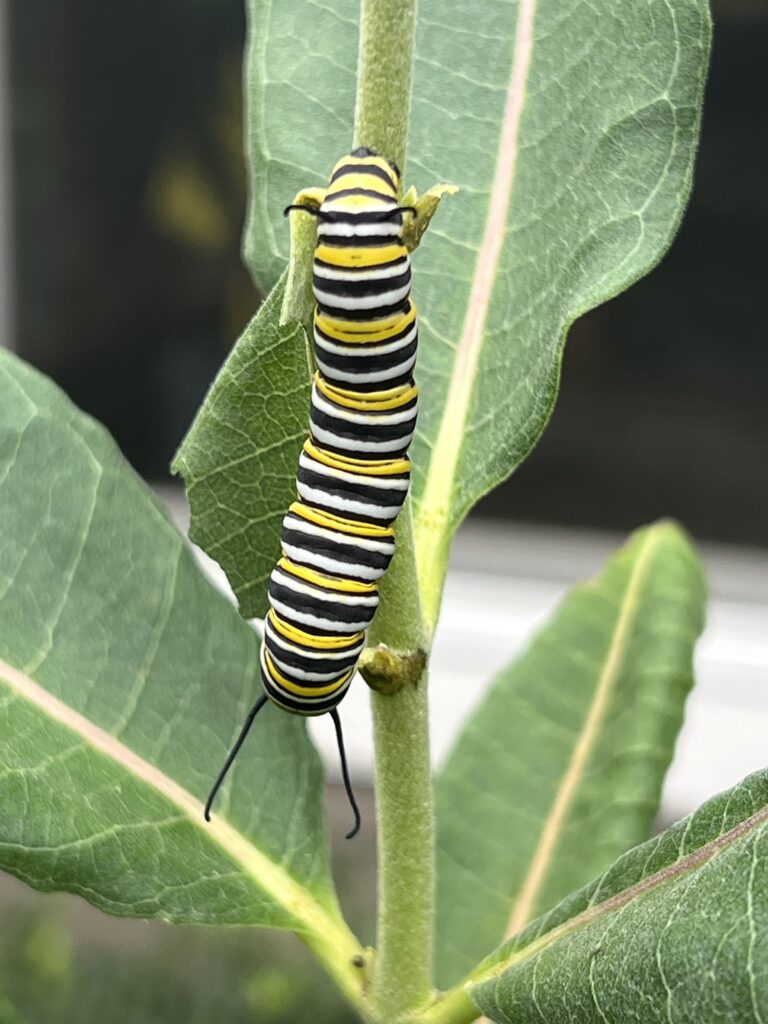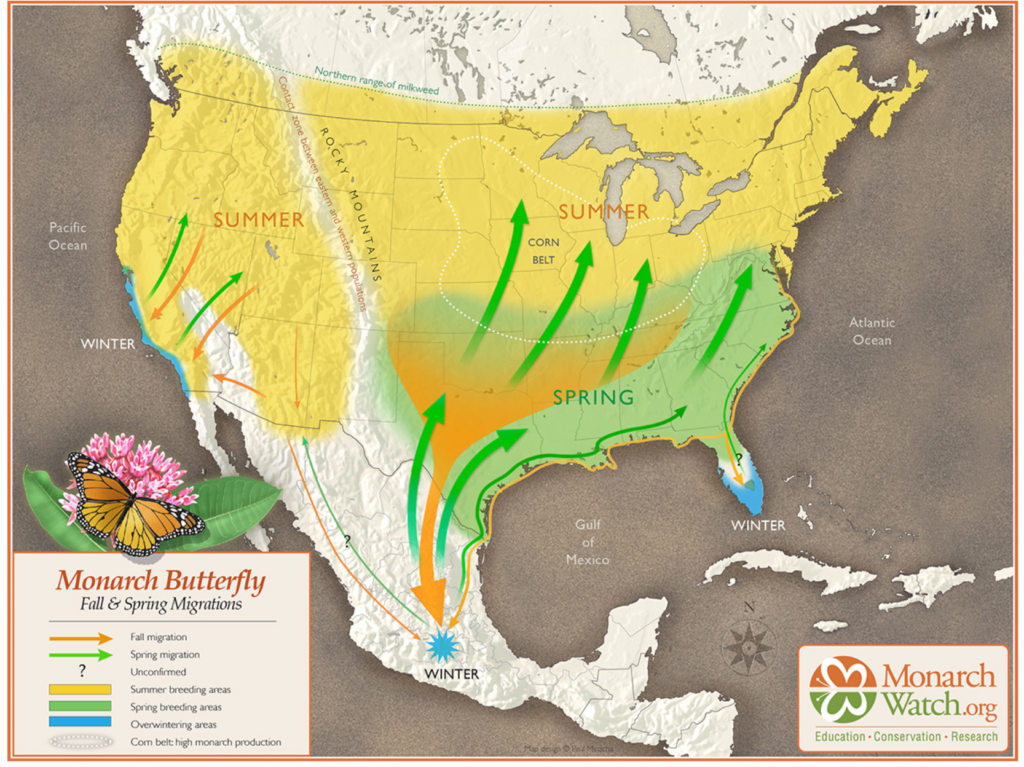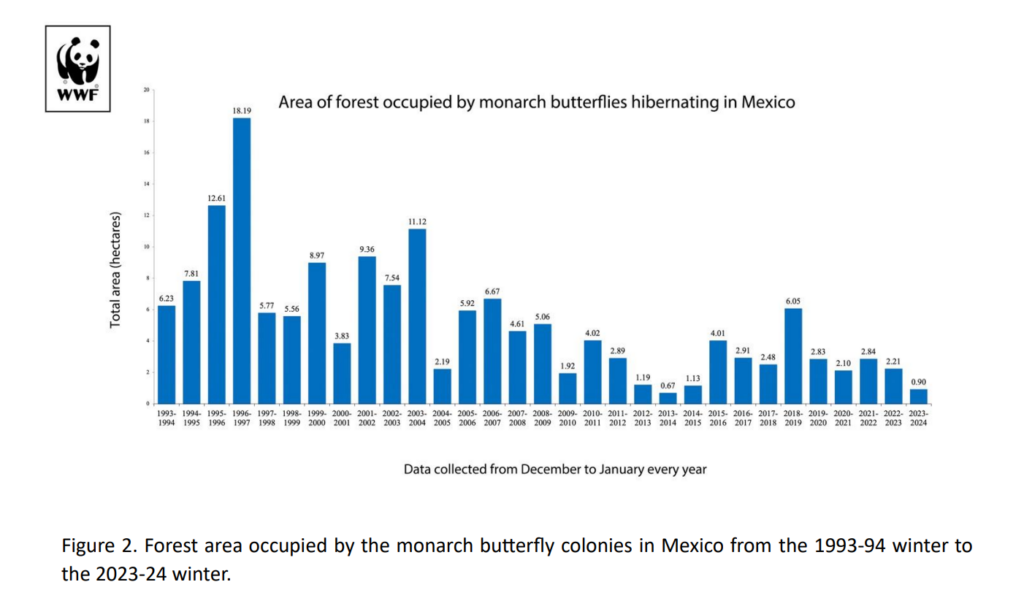Whether you are an experienced gardener or a beginner, whether you live in the city or the suburbs, or in the country; whether you live in a house or an apartment, you can help butterflies and pollinators. And they do need our help.

Monarch caterpillar

Fritillary butterfly

Monarch butterfly
You may already know how I stumbled into butterfly gardening last year. It was incredible to watch the Monarchs and Swallowtails who visited my garden to feed off the native plants in my border garden and even more exciting to find Monarch caterpillars chowing down on the milkweed that had self-seeded from the previous year.
This year, armed with new knowledge, I am on a mission to actively support pollinators and butterflies. And that includes helping to educate people about the importance of supporting our pollinators and learning what we can do to help them.
The News for Monarchs is not Good
Earlier this month, the World Wildlife Fund released its annual report on the numbers of eastern Monarchs overwintering in Mexico. Scientists do this each year by recording the space monarchs occupy in the forests of Mexico in December and January. They reported that the population of Monarchs is down 59% from last year. This year, only 0.9 hectares (about 2 ¼ acres) of forest is occupied by Monarchs, down from 2.21 hectares (about 5 ½ acres) last year.
Scientists hypothesize that Monarch populations are so low because of drought conditions in much of the US and Canada last year, however, dwindling populations over the last 30 years can be traced to loss of breeding habitat due to farming practices, use of herbicides and pesticides, and changes in land use (e.g., farmlands becoming suburbs).

Map from Monarchwatch.org
Monarch Hibernation Data since 1993
Graph from World Wildlife Foundation
So, what can we do to help?
The biggest ways to help are through learning, gardening, and spreading the word. Here are 7 things you can do now to help our pollinators and butterflies.
- Learn about the butterflies and pollinators in your area. In addition to Monarchs, what other butterflies might you attract and support in your garden?
- Learn about what butterflies and specifically, Monarchs need at each stage of their life cycle so you can provide for their needs at every stage. Ensure that you have plenty of native nectar plants for adults and host plants for the larvae and catepillars. Go here for a free list of native plants for the southeast region.
- Plant a garden. If you don’t have a garden, consider planting one. Even a container garden can help. JHJ can help you get started.
- Avoid the use of chemical and some so-called “natural” pesticides and herbicides that harm our pollinators.
- Spread the word. Share information about butterflies and pollinators with neighbors and friends. Talk with teachers in your local schools. If they don’t already have one, encourage them to plant a waystation at their school and volunteer to help them.
- Join Organizations. Register your garden. Anyone who sets up any size garden to support butterflies can register their garden with the Roselynn Carter Butterfly Trail and with Monarchwatch.org. In addition, if you are a North Carolina resident, you can set up and register a Pollinator Pitstop with the NC Wildlife Federation. Find out what’s available in your area. Sign up to support your state’s efforts to create pollinator gardens. South Carolina residents can get free milkweed seeds from the SC Wildlife Federation https://www.scwf.org/monarchs-milkweed. Many states are spearheading efforts to plant milkweeds along interstates and to time when mowing takes place.
- Consider signing up for my mini online course on butterfly gardening where we will explore all of this in more depth and where you can get the personalized coaching and help you need to design and plant a butterfly garden for your own space. Click the button below for more info.

Your writing has a way of resonating with me on a deep level. I appreciate the honesty and authenticity you bring to every post. Thank you for sharing your journey with us.